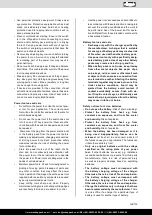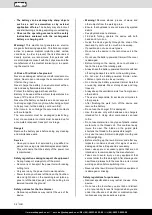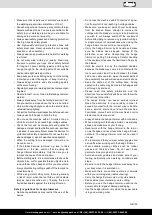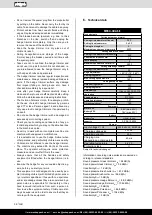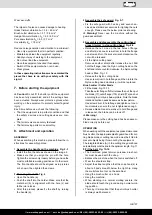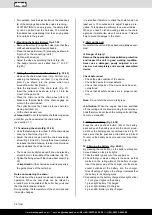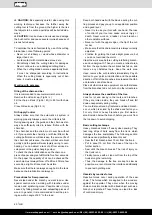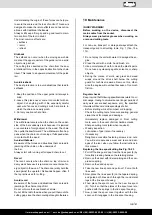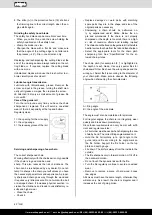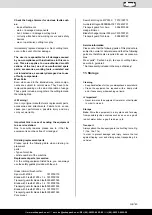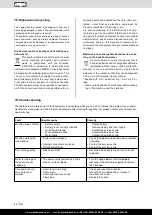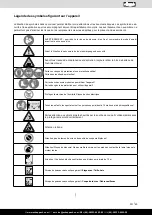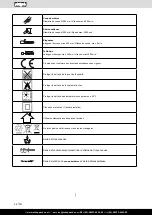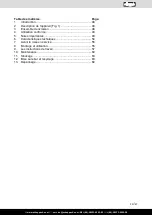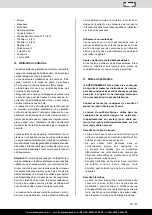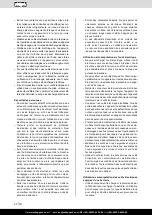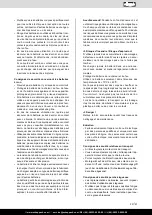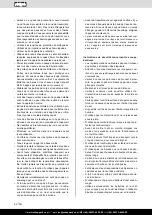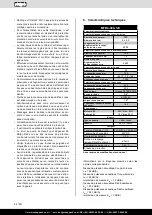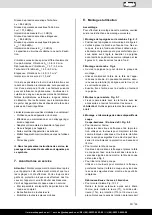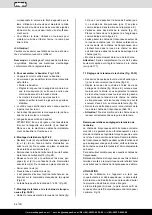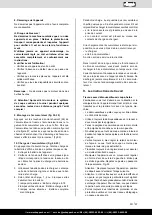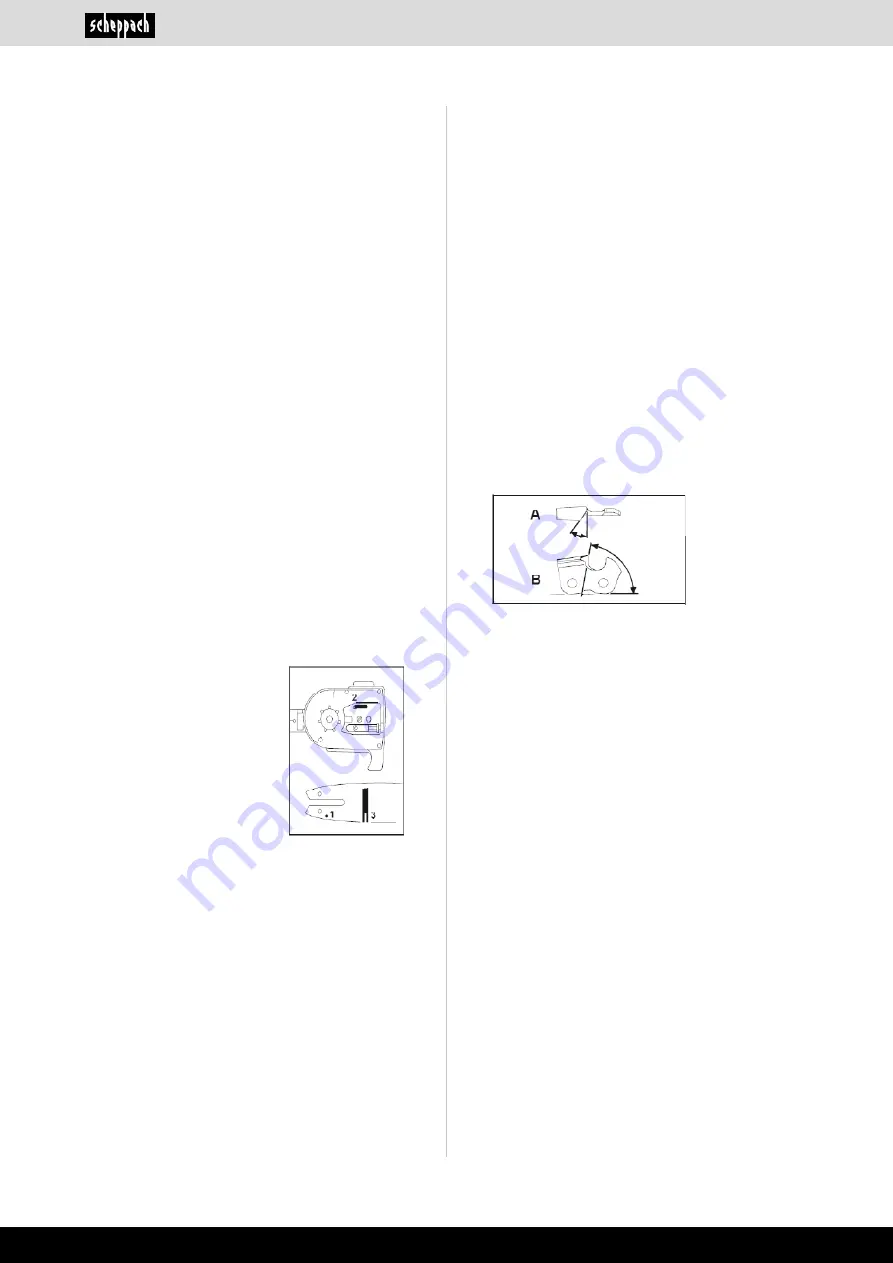
www.scheppach.com /
+(49)-08223-4002-99 /
+(49)-08223-4002-58
42 | GB
• Replace damaged or worn parts with matching
spare parts they are in the shape and size of the
original parts as necessary.
• Sharpening a chain should be performed on-
ly by experienced users! Notice. Below the an-
gle and dimensions If the chain is not properly
sharpened or the depth is too small, there is a high-
er risk of reversion effects and resulting injuries!
The chain cannot be fixed on the guide rail. It is therefore
best to remove the chain from the rail and then sharpen.
• Select the appropriate tools for the chain pitch
sharpening tool. See “Specifications” for the al
-
lowed chain pitches.
The chain pitch (for example 3/8 “) is highlighted in
the depth of each blade. Use only special files for
chainsaws! Other files have the wrong shape and the
wrong cut. Select the file according to the diameter of
your chain pitch. Make sure to observe the following
angle when sharpening the chain diameter.
A = filing angle
B = the angle of the side plate
The angle must also be maintained for all knives.
For irregular angles, the chain is run irregularly, wear
quickly and break down prematurely.
Since these requirements can only be met with suffi
-
cient and regular exercise:
• A File Holder must be used when sharpening the saw
chain by hand. The correct filing angle marked on it.
•
Hold the file horizontally (at a right angle to the
guide rail) and file according to the angle mark on
the file holder. Support the file holder on the top
plate and depth gauge.
• File down. The knife is always from the inside to the
outside
•
The file sharpens only in forward motion. Lift it off in
the backward motion.
•
Do not touch the dynamic links with the file.
•
Turn the file regularly continue to avoid a onesided
wear.
• Remove to remove a piece of hard wood, bones
raw edges.
All knives must have the same length, otherwise they
will also vary. As a result, the chain is irregular and it
increases the risk of going broke.
8. The knife (A) in the protective hood (18) shortens
the trimming line to the correct length, when the en-
gine starts again.
Grinding the safety hood blade
The safety hood blade can become blunt over time.
• When you notice this, undo the screw holding the
safety hood blade on the safety hood.
• Clamp the blade in a vise.
•
Sharpen the blade with a flat file and make sure
that the angle of the cutting edge is not altered in
the process (~25°). File in one direction only.
Replacing and resharpening the cutting blade at the
end of the mowing season always resharpen the cut-
ting blade or, if required, replace the cutting blade
with a new one.
Unbalanced blades will cause the brush cutter to vi-
brate violently-risk of accident!
Lubricate angle transmission
Lubricate with lithium-based grease. Remove the
screw and put in the grease, turning the shaft man-
ually until grease emerges, then replace the screw.
m
Attention! Fill only a small amount of grease. Do
not overfill.
Care of the guide rail
Turn the rail around every time you have the chain
sharpened or replaced. This will avoid a one-sided
wear of the rail, especially at the top and bottom.
Regularly clean
1 = the opening for the oil supply
2 = the oil passage
3 = the raceway groove of the rail
Servicing and sharpening of saw chain
The correct sharpened chain
Working effectively with the chainsaw is only possible
if the chain is in good condition and
sharp. This also reduces the risk of kickback. The
chain can be re-sharpened by any dealer. Do not at-
tempt to sharpen the chain yourself unless you have
the necessary special tools and experience. A proper-
ly sharpened chain goes way through the wood and
it requires very little pressure. Do not work with a dull
or damaged chain. It increases physical exertion, in-
crease the vibrations and leads to unsatisfactory re-
sults and higher wear.
• Clean the chain.
• Check it.






